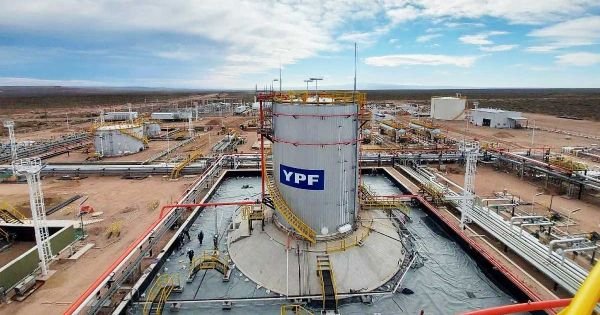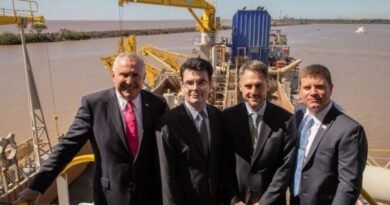YPF to relocate Vaca Muerta HQs to Buenos Aires
[ad_1]
YPF to relocate Vaca Muerta HQs to Buenos Aires
Decisions are no longer made based on the work of the Company Man at the foot of the well, Marín insisted
Argentina’s state-run oil company YPF announced Tuesday that it would be opening an operations center in its tower in the exclusive Puerto Madero district in Buenos Aires to run Vaca Muerta. The move is expected to cut costs by 30% and save up to US$ 1.5 billion a year.
YPF’s Real Time Operation Center now located in the Pelagatti Building, in downtown Neuquén, is some 100 kilometers away from Vaca Muerta. However, YPF CEO Horacio Marín, who has previously worked at Tecpetrol, chose the operations control model of ExxonMobil, which is focused on speed in real-time decisions.
As per Marín’s decision, YPF’s brain for Vaca Muerta will move to the 26th floor of the corporate building in Puerto Madero designed by Architect César Pelli and opened in 2008.
In Marín’s view, the technological complexity that will be achieved there will make the visitor believe that we are in a project to reach Mars and not drilling wells in Vaca Muerta, almost 1,300 kilometers away. Drilling and completion decisions will be made in real time from Buenos Aires, and, for that, you have to have the best professionals in the same room to make the decisions, he said.
Marín recalled that ExxonMobil halved its drilling rate in just 18 months, in a new era of the industry in which decisions are no longer made based on the work of the Company Man at the foot of the well, to whom multiple responsibilities were delegated due to the lack of adequate technology.
YPF has a maximum of 10,000 wells in all its locations, including the areas in which it is associated with third-party companies. The background of the decision is to maximize the efficiency in the operation and production and for this purpose the need to reduce the well’s cycle, that is to say, from the moment the area is entered until it is put into production, was identified.
So far this year, YPF reported 20% improvements in drilling speed. Shale output also went up by 20%, going from 105,000 barrels of crude in January to recent peaks above 130,000 and 140,000 targeted for December. In addition, a 12% progress in fractures was reported.
[ad_2]
Source link




